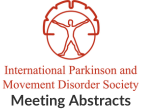A machine learning approach to determine the important patient characteristics for tremor prevalence and tremor irregularity in dystonia
Objective: To evaluate the importance of dystonia features that can predict concurrent tremor prevalence and tremor irregularity. (2) To cluster dystonia cases based on important…Factors associated with Exercise Behaviour in Australians with Parkinson’s disease
Objective: To investigate the relationship between individual factors and regular exercise behaviour in people with Parkinson’s disease (PwPD) in Australia. Background: Positive effects supporting exercise…Clinical Characteristics of Functional Movement Disorders: A Clinic-Based Study
Objective: We aimed to determine the frequency of functional movement disorder patients at a university outpatient neurology clinic, and highlight the clinical and phenomenological characteristics.…Cognitive Reserve and Physical Activity Modulate Functional Brain Re-organisation in Premanifest Huntington’s Disease: Preliminary Evidence
Objective: In this study, for the first time we examined the relationship between cognitive reserve, sleep quality and current level of physical exercise and functional…The distinct cognitive syndromes of Huntington’s disease: A two-year follow-up study
Objective: To explore if patients can be clustered into different groups based on dissimilar patterns of cognitive deterioration in a 2-year follow-up; to study the…Life Expectancy for Parkinson Patients at Hoehn and Yahr Stage 5
Objective: this study was carried out to analyze the average time taken for parkinson patients to progress from HY stage 5 to death, and investigate…Task effects on lingual kinematics in dysarthric individuals with Parkinson’s disease: Insights from two cases
Objective: The present study investigated the effects of different tasks on lingual kinematics in two individuals diagnosed with idiopathic Parkinson’s disease (PD) using the electromagnetic…Immediate effects of walking training with Honda Walking Assist Device on gait parameters of Parkinson’s disease
Objective: To verify the immediate effects of walking training with Honda Walking Assist Device (HWAD: Honda Motor Co., Ltd, Japan) on gait parameters in Parkinson’s…The epiphenomenon of movement disorders post-stroke period
Objective: The goal of this study is to describe the clinical, paraclinical and evolutive features of patients having suffered from a movement disorder in the…The use of a clinical “exercise -immobility test” in a patient with paroxysmal hypnogenic dyskinesia
Objective: We present a patient of PHD that occurred also after immobility without sleep and its severity increases in days of more exertion. Furthermore, we…
- « Previous Page
- 1
- …
- 3
- 4
- 5
- 6
- 7
- …
- 177
- Next Page »
